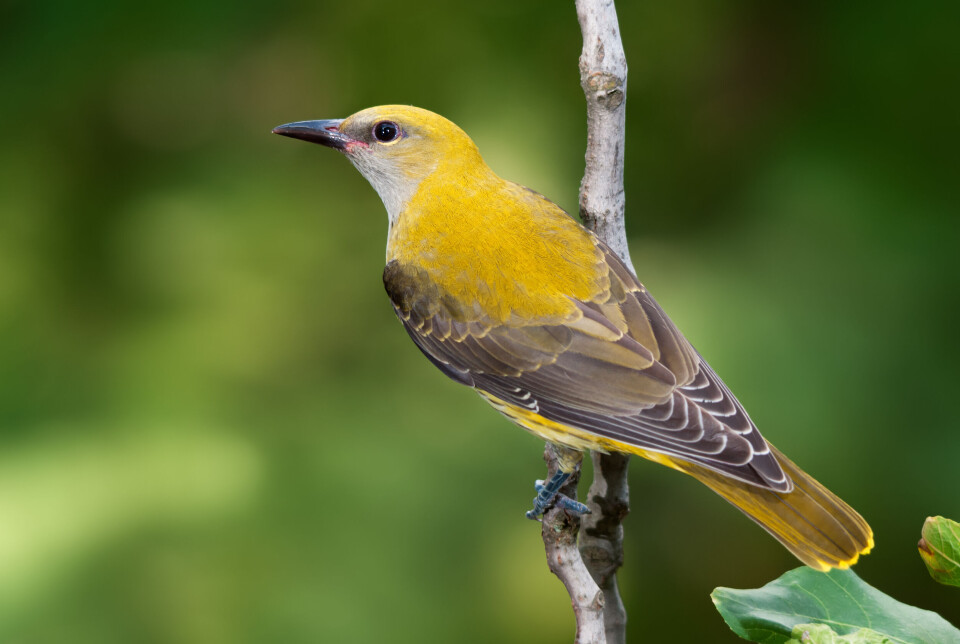-
All wrapped up for Christmas: how to protect your plants in France this winter
Discover effective methods to shield your garden plants from winter frost and cold, ensuring their survival and health through the chilly months
-
Preparing your French garden for the festive season and the year ahead
Christmas veg harvest, sustainable Christmas tree options and great deals on outdoor furniture for next summer
-
Open Gardens: celebrating success in 2025 and welcoming new volunteers for 2026
Discover the gardens charity's triumphs this past year and learn how you can offer support by joining the community
Orioles, butterflies, broom: see all things yellow in France
Golden orioles brought enchanting melodies while facing challenges and successfully raising chicks

For us, 2023 has been the year that golden orioles (loriot d’Europe) came to nest at the Mill. They have been close by in other years, but never nesting so near to us that their exotic calls – a beautiful loud fluting whistle – float around us as we take breakfast on the terrace.
Clearly, they are birds that nest in loose colonies; I have counted three males counter-singing to each other and catch glimpses of territorial chases high up in the trees around us.
I remember the first time I saw an oriole about thirty years ago when this impossibly bright yellow bird darted across the road in front of me. I wondered how something so bright could not be seen all the time? Were they incredibly rare, I wondered?
They are not so rare, and once you have learned the easily recognisable calls (easy to mimic; which I do often, but of course, it doesn’t fool the orioles), then given the right habitat and a bit of luck, you will be delighted to realise how many there are.
Read more: Gardeners in France told to stop cutting hedges in bird nesting season
What Golden orioles are like
Look for mixed temperate forest, proximity to water, hills but not high mountains, and then listen to the lovely flutey song of the males. It is true that they are much harder to see than you would expect.
Firstly, they like to live in the canopy of deciduous trees, and they only arrive here in Europe after the leaves have sprouted. The contrasting colouring of yellow body and black wings of the males breaks up the silhouette in what is known as disruptive camouflage when the overall shape is broken up into its component shapes; think zebra, tiger, or even military vehicles.
So you can imagine the horror when Angèle came out on the terrace to find this stunning and stunned body on the ground, apparently lifeless; clearly it had hit a window. However, she saw that he was still breathing, and his neck was not broken.
Gently she laid it on a seat on the wall, and little by little over the next two hours the bird straightened up, first sitting crouched but vertical, panting a little, and then, to her delight, when she next looked out, he was gone, clearly recovered enough to fly off.
We are reasonably certain that he is the male that holds his territory in the tall oak tree across the stream, calling loudly in the mornings (sometimes nearly all day) and chasing away other intruding members of the colony.
I believe also that he and his partner are possibly brooding and feeding the chicks of a second clutch, and now that the leaves have thinned out a little, we can see the nest, a well-constructed inverted traditional straw beehive shape, with the adult’s head sometimes visible.
Although I do not know of many studies that assess the percentage of time that the female broods as opposed to the male in the avian world, but in eagles, vultures, and owls the majority of this critical period is taken up by the female.
This is not to say that the male does not have a vital role in raising young, although anecdotally it seems to be that we see mainly the female’s head on the nest. In any case, in this instance, so far so good. We have now been able to count at least two hungry chicks’ mouths poking up over the rim.
An epilogue to this saga: this brave oriole and his partner managed to survive storms, violently swaying trees, nearly 24 hours of torrential rain when the only protection for their precious young ones were their own bodies, and have successfully raised four young orioles. A formidable example of the resilience of Nature.
Other wildlife
One of the first butterflies of the season that we see in the region is the common brimstone (citron). For a butterfly, they have an unusual life cycle. The single annual brood emerges in late summer, and very soon the butterflies hide away to hibernate over winter without mating, to appear again in March or April. (My thanks to the Collins guide for this information).
The yellow male (above) clearly had mating on his mind as he persistently fluttered around the pale female as she posed decoratively on the pink carnation, staying only a metre away from myself and a friend. But, alas for him, she eventually decided (by tasting his pheromones perhaps) that he wasn’t the one, and off she flew to find another (yellow) beau.
There is a yellow plant that grows abundantly all over the hillsides in the Aude, flowering in early spring and summer. It is very competitive with other plants and contributes to the danger of wildfires (incendies) as it ignites and burns very easily. According to botanists, this is actually a competitive strategy as its roots will survive and re-sprout to take over the clear ground that is available after the fire. It is a species of broom (spartier à tiges de jonc).
Read more: Count birds in your garden in France this weekend to help researchers
Finally, on the theme of yellow, I am reminded of an interesting photo that a friend, Francine, took last week. Earlier in the year she discovered the nesting site (aire de nidification) of Egyptian vultures (vautour percnoptere) that previously no one knew existed.
Unfortunately, it is sited in a spectacular mountainous landscape that is much visited by climbers and tourists in the summer season, and Francine knew that sooner or later the rescue helicopter would be called in to deal with an accident – as happens every year.
She was there again to witness a noisy emergency callout of the helicopter.
As it happens, it was the male who was brooding the newly hatched chick at the time; although clearly stressed and crouching down (if you observe individual birds for as long as Francine does, you begin to recognize sex, and then understand how body shape and plumage signal the bird’s attitude), the poor bird hung on in there and never fled the nest.
The noise must have been horrendous, a large flying object in the very close vicinity which the birds can only interpret as a predatory threat, terrifying. Bravo the male!
Related links
Ban bird hunting with glue and traps by closing loophole, France told
Traditional bird hunting methods used in parts of France ruled illegal
France reviews reauthorising traditional net and cage bird hunts
























